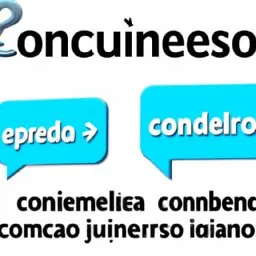Spanish conjunctions are powerful grammar tools that can help improve your communication skills. They are used to connect words, phrases or clauses in a sentence, helping to create a smoother and more natural flow in the conversation. This chapter will focus on providing practical examples of how to use Spanish conjunctions in a conversational context.
Conjunctions in Spanish can be divided into three main categories: coordinating conjunctions, subordinating conjunctions, and correlative conjunctions. Each of them has a specific role in sentence structure.
Coordinating conjunctions are used to connect words, phrases, or clauses of equal importance within a sentence. Common examples include 'y' (and), 'o' (or), 'pero' (but), 'bell' (but, used to counter a prior negation), and 'ni' (nor). For example, you can say 'Me gusta el té y el café' (I like tea and coffee) or 'No quiero ir al cine, sino al Teatro' (I don't want to go to the cinema, but to the theatre).
Subordinating conjunctions, on the other hand, are used to connect a subordinate clause to a main clause. Common examples include 'que' (that), 'como' (how), 'cuando' (when), 'donde' (where), 'porque' (why), 'aunque' (although) and 'si' (if ). For example, you can say 'Voy a la tienda por que necesito comprar leche' (I'm going to the store because I need to buy milk) or 'Si tienes tiempo, podes ir al parque' (If you have time, we can go to the park).
Correlated conjunctions are pairs of conjunctions that work together to coordinate words or phrases in a sentence. Common examples include 'tanto...como' (both...how much), 'ni...ni' (neither...neither), 'ya...ya' (already...already) and 'o ...o' (or...or). For example, you can say 'Tanto me gusta el té como el café' (I like both tea and coffee) or 'Ni quiero ir al cine, ni al Teatro' (I don't want to go to either the cinema or the theatre).< /p>
Conjunctions are essential for building complex sentences and for expressing more sophisticated ideas. They allow you to connect your ideas more fluidly and naturally, making your conversations more engaging and interesting. Also, good use of conjunctions can help improve your fluency in Spanish as it allows you to speak more continuously without having to stop and think about how to connect your ideas.
To practice using conjunctions in Spanish, try to create your own sentences using the given examples. Remember that practice is the key to mastering any aspect of a language, and conjunctions are no exception. The more you practice, the more natural it becomes to use conjunctions in your conversations.
In short, conjunctions in Spanish are extremely useful grammar tools that can help improve your communication skills. By understanding how to use them correctly, you'll be able to express your ideas more clearly and effectively, making your Spanish conversations more fluent and natural.








